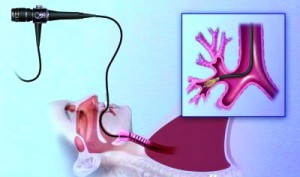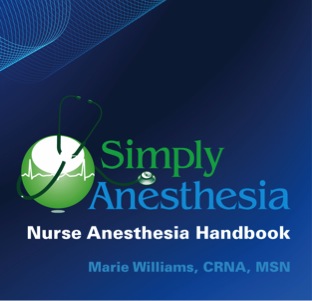Dec 12
27
Bronchial Thermoplasty: Anesthetic Considerations
 Bronchial thermoplasty is a new procedure, approved by the FDA in 2010, for the treatment of severe asthma. It is a procedure where heat is applied to the bronchial wall to reduce the amount of smooth muscle and reduce its’ ability to contract. Bronchial thermoplasty is a non-drug procedure for severe persistent asthma in patients 18 years and older whose asthma is not well controlled with inhaled corticosteroids and long-acting beta-agonists. It is contraindicated in patients with AICD, pacemaker, and other implanted devices or who have had it done previously.
Bronchial thermoplasty is a new procedure, approved by the FDA in 2010, for the treatment of severe asthma. It is a procedure where heat is applied to the bronchial wall to reduce the amount of smooth muscle and reduce its’ ability to contract. Bronchial thermoplasty is a non-drug procedure for severe persistent asthma in patients 18 years and older whose asthma is not well controlled with inhaled corticosteroids and long-acting beta-agonists. It is contraindicated in patients with AICD, pacemaker, and other implanted devices or who have had it done previously.
This minimally invasive bronchoscopic procedure is performed in three outpatient procedure visits, each treating a different area of the lungs and scheduled approximately three weeks apart. The lobes of the lungs are completed in the following order: right lower lobe, left lower lobe and upper lobes. The right middle lobe is NOT treated. After all three procedures are performed, the bronchial thermoplasty treatment is complete. No clinical data are available studying the safety and/or effectiveness of repeat treatments.
Bronchial thermoplasty is routinely performed under moderate sedation or light anesthesia, and the patient typically goes home the same day. The pulmonologist performs the procedure using a standard bronchoscope with the thermal catheter inserted via the side port. The radiofrequency energy is delivered with low power in a temperature controlled (65 degrees C) environment. It is considered to be a low fire risk with a maximum time per burn of 10 seconds.
Anesthetic considerations include:
- Outpatient
- Should be on prophylactic prednisone or equivalent for 3 days prior to procedure
- General with OETT or sedation
- Nebulizer and pulmonary function tests done immediately before procedure
- Consider using Glycopyrrolate to dry up secretions and performing a deep extubation
- Avoid histamine releasing medications
- The procedure lasts approximately 1 hour long
- The patient is moved to the PACU for post-op monitoring for 2 to 4 hours
- It is recommended that spirometry assessment be done pre-procedure and in PACU before discharge

 Email us! Get your copy today.
Email us! Get your copy today.